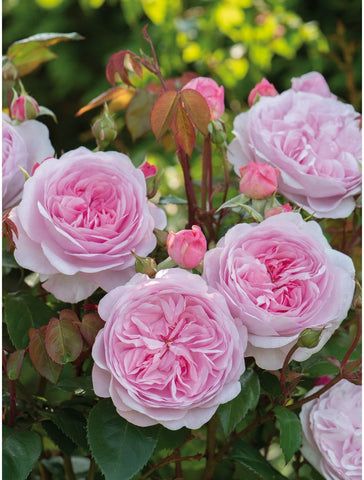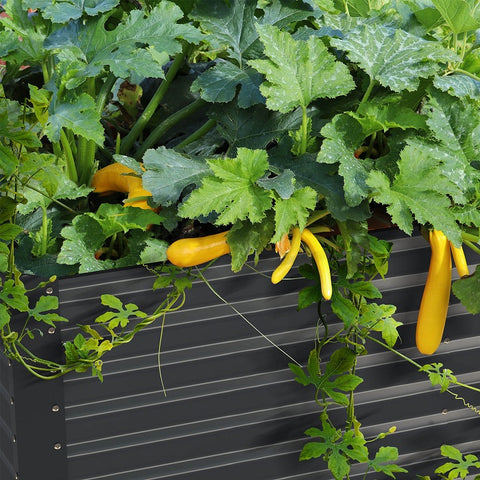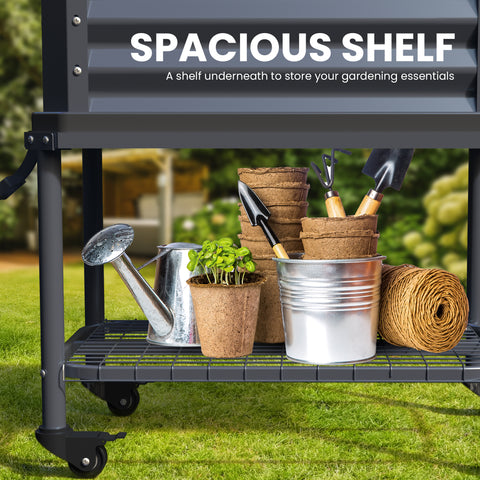In our lives, the flower bed is a beautiful decoration, which can add vitality and color to our environment. Building a flower bed can be a fun project, especially if you choose to use wood as a material. Wood is a sustainable and environmentally friendly option, and is also very flexible during construction. This article will show you how to build a flower bed out of wood so that you can enjoy the beautiful flowers in your own yard or garden.The following content also has some reference value for raised garden beds.

Part One: Planning and design
Before starting to build a flower bed, planning and design are very important steps. Here are some guidelines to help you plan and design your flower bed.
- Choose the location: First, you need to choose a suitable location to build the flower bed. Consider factors such as sunlight exposure, soil quality and the surrounding environment. Make sure the bed gets enough sunlight and that there aren't too many barriers around it.
- Determine the size: Determine the size of the flower bed according to your space and needs. Consider the number and variety of flowers you want to plant, as well as the overall look of the flower bed.
- Choose the type of wood: When building the flower bed, you can choose different types of wood, such as pine, oak or mahogany. Choose wood that is durable and resistant to corrosion to ensure that the flower beds will stand the test of time and weather.
- Design the appearance: According to your preferences and overall style, design the appearance of the flower bed. Consider adding flower bed edges, decorative patterns, or other special design elements to add beauty.
Part 2: Buying and preparing the wood
Before building a flower bed, you need to buy the required wood and make the necessary preparations. Here are some key steps:
- Measure and purchase wood: According to your design and dimensions, measure the length and quantity of wood required. Buy the right amount of wood and make sure they are of sufficient quality and size to support the structure of the flower bed.
- Cut and sand the wood: Use a saw or electric saw to cut the wood to the desired length and shape according to your measurements. The surface of the wood is then sanded using sanding paper to ensure that the surface is smooth and without any sharp edges.
- Paint or waterproof treatment: Depending on your choice, you can paint the wood properly or waterproof treatment. This will help protect the wood from sun damage, rain and other natural elements.
Part 3: Assembling the flower bed

Once you have the wood ready, the next key step is to assemble it into a flower bed. Here are some suggestions:
- Lay the foundation: Dig a trench of appropriate depth and width at the selected location using a shovel or backhoe. This will form the basis of the flower bed.
- Install the flower bed support: Insert a piece of wood end into the excavated trench, making sure it is flush with the ground. Then, using a screwdriver or an electric drill, drill holes in both ends of the wood and secure them with screws. This will ensure the stability of the flower bed.
- Assemble layer by layer: According to your design, join the wood together layer by layer until the flower bed reaches the desired height. Use screws or pegs to secure wood joints to enhance the stability of the structure.
- Add flower bed edges: Depending on your design, additional wood can be added to the edges of the flower bed to increase aesthetics and protect the plants inside the flower bed. Make sure the edges are firmly attached to the structure of the flower bed.
- Install a layer of plastic to prevent soil leakage: To prevent soil leakage to the outside of the flower bed, install a layer of plastic film inside. Attach the plastic film to the inside of the flower bed, making sure it fits tightly into the edge of the bed.
Part Four: Maintenance and decoration
Once you've finished assembling the flower bed, next comes some advice on how to care for and decorate it.
- Choose the right plants: According to your personal preferences and the climatic conditions of the growing area, choose the plants that are suitable for planting. Consider their color, height, and flowering period to create beautiful and diverse flower beds.
- Regular watering and fertilizing: In order to keep plants healthy and growing, regular watering and fertilizing is essential. Make sure your plants get enough water and nutrients according to their needs. Be careful not to overwater, which can cause moisture buildup and root rot.
- Pruning and trimming: Trim the branches and leaves of plants regularly to keep the flower bed clean and organized. Remove any dead plant parts and trim the shape of the plant to keep it healthy and beautiful.
- Pest control: Closely observe plants and take necessary measures to prevent and control possible pest and disease problems. Use organic fertilizers and environmentally friendly pesticides to reduce the impact on the environment.
- Decorate the flower bed: In order to increase the charm of the flower bed, you can consider adding some decorative elements, such as flower bed stones, flower bed lights or small sculptures. These decorations can add character and uniqueness to a flower bed.
- Regular maintenance: Regularly check the structure of the flower bed and the state of the wood. If any broken or decaying wood is found, repair or replace it promptly to ensure the stability and permanence of the flower bed.

Conclusion:
Building a flower bed made of wood can be a fun and rewarding project. Through planning, design and assembly, you can create a beautiful, environmentally friendly and durable flower bed in which to grow a variety of flowers and plants to add color and life to your patio or garden. Remember to pay attention to the needs of the plants when maintaining and decorating the flower bed, and perform regular maintenance to ensure the beauty and functionality of the flower bed. May you enjoy building and appreciating wood flower beds!









